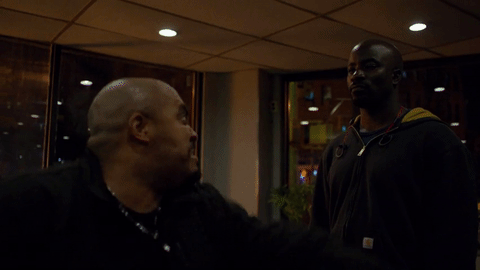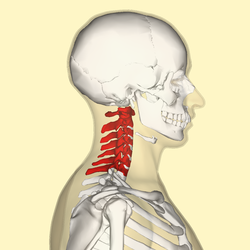
Knockout Secret: Bone Strikes Using the Open Hand
December 22, 2016
“A lot of people don’t appreciate that palms can be even more devastating than a fist in a lot of circumstances…the dummy really makes you aware of that because most of the striking on the wooden dummy is done with open hands, so its telling you something also quite crucial – that your hand is a very effective weapon.”
Sifu David Peterson
The Chinese have many sayings – one of the more general martial art sayings is “fist to the body – open hand to the head.”
Although the chained punch is the principal weapon of the Wing Chun system, it requires some prerequisites, particularly conditioning the hand. Since conditioning the hand takes many years of steady training (and must be maintained), most people aren’t doing it!
How many of us are really conditioning our hands to the necessary degree?
You should be hitting the wallbag every day in a progressive manner then maintaining the conditioning once achieved. It takes a long time (a year or two) to really get Wolf’s Law working on your behalf. And you also have to have impeccable technique, relaxing at the right time and tightening at the right time. It takes a lot of training to do it right.
This is a big, big un-examined problem in Wing Chun training.
Students are punching the wallbag for a few minutes and maybe doing some pad drills and then spending many hours developing a reflex to punch people in the head. Someone said, “don’t put in part-time efforts and expect Championship results.”
This is a recipe for disaster!
If strike someone in the skull with your fist, 95% of the angles and targets will provide a good opportunity for a broken hand, and in many cases. a shattered hand. The harder you punch, the more you will damage not only your opponent but yourself. Physics tell us forces will generate an “equal and opposite” reaction.
 While this Luke Cage image may be an extreme example, its certainly possible, especially if your fist lands on a really thick section of the skull (like if the opponent ducks and you hit them in the top of the head).
While this Luke Cage image may be an extreme example, its certainly possible, especially if your fist lands on a really thick section of the skull (like if the opponent ducks and you hit them in the top of the head).
This is why they invented the Palm Strike (or what UFC ex-Champ Bas Rutten calls a “bone strike”).
If this is true, why do we rely on the punch at all?
The big problem with the Palm strike is is requires you get a little closer to your target. Closer is considered less safe for Wing Chun. Inches are like miles at this range. This is also the problem with elbow strikes, and why Wing Chun typically only uses the elbow to break a grab. We don’t usually use elbows to strike the head.
The closer you are (or if you are inside), the faster things happen, and less time you have to react. Our bent arm hitting range was selected for its specific characteristics. Its close enough but not too close. Its the Goldilocks move for hitting. Just right. You have to get this close to hit with structure, but its dangerous so we also try to protect ourselves by attempting to maintain two hands on top, we like to move to the outside if possible, we chain the attack to make it more difficult to defend.
Why do we train the Palm so little in our training?
One of the classic indicators of how important a technique is in a Chinese martial system is how often (and how early) it occurs in the drills. In Wing Chun, the most important drill is the first one, the Siu Lum Tao. Although Chum Kiu tells us how to move, SLT tells us how to use our most basic strikes. And if we go by SLT, we should the Palm quite a bit — I count seven (including Gaan, etc).
Most specifically, there is the palm to the face with the fingers pointing to midnight which occurs right after the very important Tan-Wu-Fook section.
If you perform it correctly, arching the hand away from the wrist so that what hits the target are what they call the “distal” ends of the radius and ulna (the two bones that make up your forearm).
You are basically jabbing the opponent in the head with the blunt, thick knobs that are the ends those two bones. Plus the bones themselves are strong and flexible and very, very unlikely to break.
One the problems about demo-ing Wing Chun actions is that we don’t want to beat up on our students to provide clear evidence of what a particular action will do. So we basically have to use our imagination a little bit. To help with this imagination, I cut together various bits of my training to help show what would happen if I was able to get one or more of these “bone strikes” through and hit an opponent in the head with them. I find its not to difficult in real life (with a moving, dodging opponent) to pull off a strike with the elbow down and the fingers pointing at three o’clock. The “finger to midnight palm strikes are easy on a pad and on “Bob” (the rubber man) but a little more difficult on a moving target. This would probably be pretty devastating as a surprise opening shot though, from a fence-type position, which I also show in this clip.
NOTE: You’ll Buka and I training something I got from Geoff Thompson. Your training partner holds the pad. You put one hand on the edge of the pad or one their shoulder. This is meant to simulate a “hey, I don’t want any trouble” friendly talking with the hands, which can also be deception and an un-threatening fence.
It helps me to think of this action less as a “hitting the head with the palm” and more like I’m “stabbing them in the head with the bone.” I actually use this imagery for punching as well. Think of your elbow as a hand holding a sword and everything forward of the elbow as the sword. Ideally, you get on the outside and stab this “sword” through the “V notch” (gunsight) of the opponent’s raised bent arm.
Rinse and repeat.
 A great combination is a neck pull which yanks the opponent’s head down into the uprising palm strike. Think of the neck pull from the beginning of the dummy. You miss the punch, them pull the hand back (in a kind of jutt action), slapping the “jade pillow” (nape of the neck, location of cervical spine) with the sharp jutt-like pull. Be very careful with this in training! Only very slow and miming the action, as it is very easy to hurt your training partner!).
A great combination is a neck pull which yanks the opponent’s head down into the uprising palm strike. Think of the neck pull from the beginning of the dummy. You miss the punch, them pull the hand back (in a kind of jutt action), slapping the “jade pillow” (nape of the neck, location of cervical spine) with the sharp jutt-like pull. Be very careful with this in training! Only very slow and miming the action, as it is very easy to hurt your training partner!).
But the idea is to train to yank the head into the elbow-driven bone ends of the radius and ulna. If you look at an x-ray, they look like a pair of clubs (and probably were used for this back in pre-history).
Here is Bas Rutten saying virtually the same thing, although he is advocating a direct attack to the “jade pillow” (back of the neck) or a clothes-line style strike to the area behind the ear.